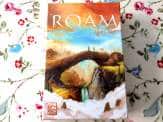Seeing a paper belly band, instead of plastic shrink wrap, around the decks of cards in Isle of Night from Red Raven Games made me realise that now might be the time to write again about sustainability and eco-friendliness in the board game hobby. Thinking back over the last few months, it feels as if publishers and players alike have started thinking more about making games greener. So in this article, I am looking at where the industry stands today.
Listen to the Audio Version
Intro Music: Bomber (Sting) by Riot (https://www.
Startup by Alex-Productions | https://onsound.
Music promoted by https://www.
Creative Commons / Attribution 3.0 Unported License (CC BY 3.0)
https://creativecommons.
10 Chill-Hop Tracks (vol. 1) by | e s c p | https://www.
https://escp-music.
What It All Means
Before I go much further, let me explain what I mean by sustainability and eco-friendliness with regard to board games.
Both look at board games as products, but while eco-friendliness is mostly about minimising environmental harm, sustainability goes further and evaluates the long-term environmental and ethical impact. To become more eco-friendly, you might be cutting down on plastic packaging or reducing the energy and waste involved in your printing and distribution. Sustainability’s goal, on the other hand, is to make board games in a way that manufacturing them can continue virtually indefinitely without damaging the environment or exploiting workers and resources.
One of the most well-known eco-friendliness and sustainability indicators is the Forest Stewardship Council (FSC) certification, which ensures paper and wood products come from responsibly managed forests. Board games carrying the FSC label show that the publisher is sourcing materials that meet carefully considered environmental and social standards.
Another factor that affects eco-friendliness and sustainability is the use of plastic, which remains a major problem. Most plastic trays, bags, and shrink wrap are not recyclable. Once they end up in landfill, they will sit there for millennia or break down into microplastics that enter the food chain.
While one non-FCS-certified game or one plastic insert might not seem like much, it adds up quickly when you consider that every year 3,500 to 5,000 new games are released, each one with a print run of around 1,000 to 3,000 copies. That’s millions of boxes. The copy you hold in your hand is a tiny fraction of the problem.
Luckily, publishers are beginning to review their production processes. In the last few years, publishers have taken meaningful steps toward eco-friendly production and sustainability, and some of these changes involve reducing packaging, switching materials, or reevaluating entire product lines.

Recent Changes at Publishers
Stonemaier Games has published a detailed breakdown of the sustainable choices they make during production. They use FSC-certified wood and paper, soy-based inks, water-based varnishes, and recycled materials for components where possible. The inserts for Wingspan, for example, were originally made of plastic but are now produced using cardboard. Shrink wrap has been replaced by paper belly bands, and wafer seals are used on the outside of boxes to ensure games remain secure while in transit. Additionally, games are designed with box size efficiency in mind, avoiding excessive space that wastes material.
All of these updates are now part of Stonemaier Games’ regular production guidelines, not just one-off experiments. That is a hugely important change and worthy of mention. The improvements are the default practice for Stonemaier‘s core products.
Red Raven Games has also embraced more sustainable manufacturing methods. In its crowdfunding campaigns for Above and Below: Haunted and Creature Caravan, the publisher outlined several eco-friendly printing practices. These include using FSC-certified materials, paper wraps instead of shrink wrap, cardboard inserts instead of plastic trays, and recyclable packaging. These choices now extend across all new titles and are shaping the publisher’s future direction.
Lookout Spiele has expanded its Greenline series, which now includes several games produced using FSC-certified materials, cardboard inserts, and paper belly bands. The boxes in this series are carefully sized to avoid wasted space, and packaging is designed with recycling in mind. While the original Greenline announcement came in 2023, Lookout Spiele restated its commitment to sustainable production recently and announced new titles in the series. The goal is to apply the same values to as many products as possible, not just small-box or family games. That has included updating packaging for some existing titles and removing shrink wrap across the board.

Consumer Expectations
It’s not all up to publishers though. As consumers, we have to make more eco-friendly and sustainable choices when buying board games, and it seems like that is happening.
During crowdfunding campaigns, greener practices are increasingly valued by supporters. Backers have begun to ask whether components are recyclable, if box sizes are efficient, and whether plastic-free versions are available.
The Trash Rush crowdfunding campaign, for example, explicitly highlighted its commitment to sustainable materials, saying that they were using low-impact, sustainable materials across the entire production, including paper wraps instead of plastic for cards, recyclable packaging, and eco-friendly shipping.
Recyclability has become a visible selling point. Publishers now include sustainability in their promotional materials, and backers increasingly expect it. It’s a shift that shows that eco-friendliness is no longer an afterthought but an integral part of product appeal and consumer trust.
The trend is also reflected in board game reviews. Where once component quality focused on weight, texture, and finish, reviewers, including myself, now routinely point out when inserts are plastic, whether boxes are oversized, and if materials are recyclable. Over time, this consumer pressure should entice more and more publishers to make their board games more eco-friendly and their processes more sustainable. Publishers like Stonemaier Games, Red Raven Games and Lookout Spiele are already leading by example. They publicly proclaim how they are integrating sustainable decisions into their production pipeline.
These changes matter. While no product can ever claim to be fully sustainable, these choices reduce harm, encourage smarter design, and build a culture of accountability within the industry. As consumers, reviewers, and retailers continue to ask difficult questions, the pressure to find better solutions will grow.
One day, eco-friendliness and sustainable production will no longer be a marketing gimmick, but they will be a basic standard.
This blog is free for everyone, but if you'd like to support it, here are some options.
Useful Links
- Isle of Night review: https://tabletopgamesblog.
com/ 2025/ 07/ 19/ isle-of-night-saturday-review/ - Red Raven Games: https://www.
redravengames. com/ - Stonemaier Games: https://stonemaiergames.
com/ - Are Our Games Eco-Friendly? Part 1: https://stonemaiergames.com/are-our-games-eco-friendly-part-1/
- Eco-Friendly Components and a Great User Experience Are Both Possible: https://stonemaiergames.com/eco-friendly-components-and-a-great-user-experience-are-both-possible/
- Wingspan review: https://tabletopgamesblog.
com/ 2019/ 03/ 16/ wingspan/ - Above and Below: Haunted crowdfunding campaign: https://gamefound.
com/ en/ projects/ red-raven-games/ above-and-below-haunted - Creature Caravan crowdfunding campaign: https://gamefound.
com/ en/ projects/ red-raven-games/ creature-caravan - Lookout Spiele: https://www.
lookout-spiele. de/ en/ news. php - Greenline Announcement: https://www.
lookout-spiele. de/ en/ news/ greenline_ announcement. html - El Paso Board Game Road, Lookout Spiele, https://www.lookout-spiele.de/en/news/elpaso_boardgameroad.html
- Trash Rush crowdfunding campaign: https://www.kickstarter.com/projects/rosemarymosco/trash-rush/posts/4084292
Audio Version
Intro Music: Bomber (Sting) by Riot (https://www.
Startup by Alex-Productions | https://onsound.
Music promoted by https://www.
Creative Commons / Attribution 3.0 Unported License (CC BY 3.0)
https://creativecommons.
10 Chill-Hop Tracks (vol. 1) by | e s c p | https://www.
https://escp-music.
Playlist
These are the songs I listened to while I was writing this topic discussion article:






